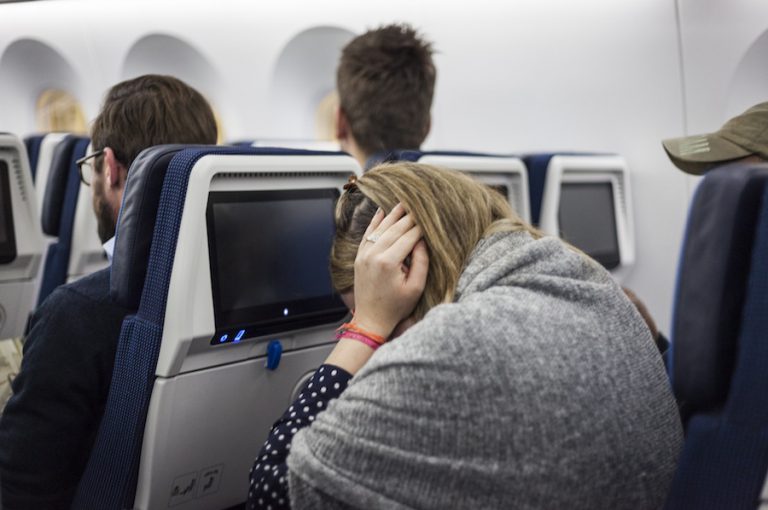
The most common hassle in your airplane journey is ear pain but it depends on the impact of the person. For some person it quite uncomfortable while for others it causes extreme pain. Usually, that ear pain is simply a demanding however creates a state of affairs of agitation and inconvenience. Sometimes, the ear pain and pressure get extreme and in the end, lead to hearing loss. Therefore, it’s better to take precautions before, at some stage in and after the flight. Unfortunately, the ear pain and pressure does, in rare cases, lead to severe pain and hearing loss, so it is best to take precautions, before, during and after your flight. If you are already suffering from any ear infection, ensure to consult your audiologist prior to the flight. If you don’t have one already, then it is better to review some experienced audiologists in your area and make an appointment prior to your flight.
How to prevent ear pain in flight
Contents
As we heard “Prevention is better than Cure”, So there are certain tips which can help you to prevent the ear pain while you traveling in flight.

1. Swallowing :
Swallowing help to open the Eustachian tube so that air will be able to reach the inner ear during descent. The Eustachian tube ensures that the air in the middle ear is constantly being refilled. That air is then absorbed into the membrane of the inner ear, and the cycle begins over again. This cycle of air ensures that the ear pressure on both sides stays equal.
2. Yawning :
Yawning prompts the muscle groups that open the Eustachian tube to allow strain to stability out in the ears. So Yawn as regularly as you can because it helps to reach the air in the middle ear.
3. Valsalva maneuver:
It is a simple technique only you’ve to follow the method for doing this, first blowing through the nose as the nostrils are pinched. One must repeat the process a few times to discover relief from ear pain. But if you are sick with a cold or allergies, the Valsalva maneuver is not recommended, as it could cause a severe ear infection.
4. Chewing gum :
Chewing gum will stimulate frequent swallowing which helps equalize air pressure between the middle ear and outer environment. For toddlers, whose Eustachian tubes are much narrower than an adult’s, the change in air pressure can be even more excruciating, so a bottle is recommended to increase swallowing, especially when you move downward.
5. Wake up in time :
If you’ve taken some precautions or medicine to avoid ear pain and had a great depart with no pain, then don’t wake up too late because you’ve to prepare your ears for landing. Just ask the flight attendant to wake you up early so that you can prepare your ears for landing.
6. Decongestant :
If you have nasal congestion then take a decongestant 30 minutes before departing the flight. But if you use nasal sprays for relief from nasal congestion you can take this 1 hour before the depart. The nasal sprays open your nasal passages and you feel relax while breathing.
7. Drink water :
Drink a lot of water as you can to remain properly hydrated and avoid inflammation of the nasal passages, which ensures better characteristic of the Eustachian tubes.
Symptoms
You can experience the pain in one or both of your ears while traveling in airplanes. Some of the signs and symptoms are the following:-
- The feeling of stuffiness or fullness in your ear
- Slight or Muffled hearing loss
- Pain or discomfort in your ear
In case of severe ear pain in airplanes, you may look at the following symptoms:-
- Vertigo
- Tinnitus
- Ear pressure or same pressure develops when you underwater
- Your ear may start bleeding
- Moderate to severe hearing impairment
- Vomiting as a result of Vertigo
Why does it happen?
So what really happens to ears when we traveling in airplanes? It all comes down due to air pressure. Normally the air pressure inside the inner ear and the air pressure of the environment are essentially the same which may not affect in the ear or not enough difference in the ear pressure to cause any trouble. Even if you go upward to the top of a mountain the slow speed of your ascent would give time for the pressure to equalize along with the ear and the environment. A problem only occurs when the change in altitude is so rapid, like air travel, scuba diving, Jump in Height etc. in that situation the pressure inside the inner ear and the air pressure outside don’t have time to equalize. That’s why you suffer pain while a change in the altitude rapidly.
If everything went normal, the overpressure air inside the internal ear escapes by using the Eustachian tube. It becomes easy for this eustachian tube to start exhausting air than to suck it inside, this is the main reason why every one of us has difficult flying when an airplane starts climbing.
Risk factors
Any condition that limits the function of the Eustachian tube or blocks the eustachian tube can increase the risk of ear pain while traveling in the airplanes. Following are the common risk factors:-
- The common cold
- Sinus infection
- Hay fever
- Middle ear infection
- Sleeping on an airplane during ascent and descent
Frequent ear pain due to traveling in airplanes may damage the tissues of the inner ear or eustachian tube, which increases your chances of experiencing the same problem again in future.



